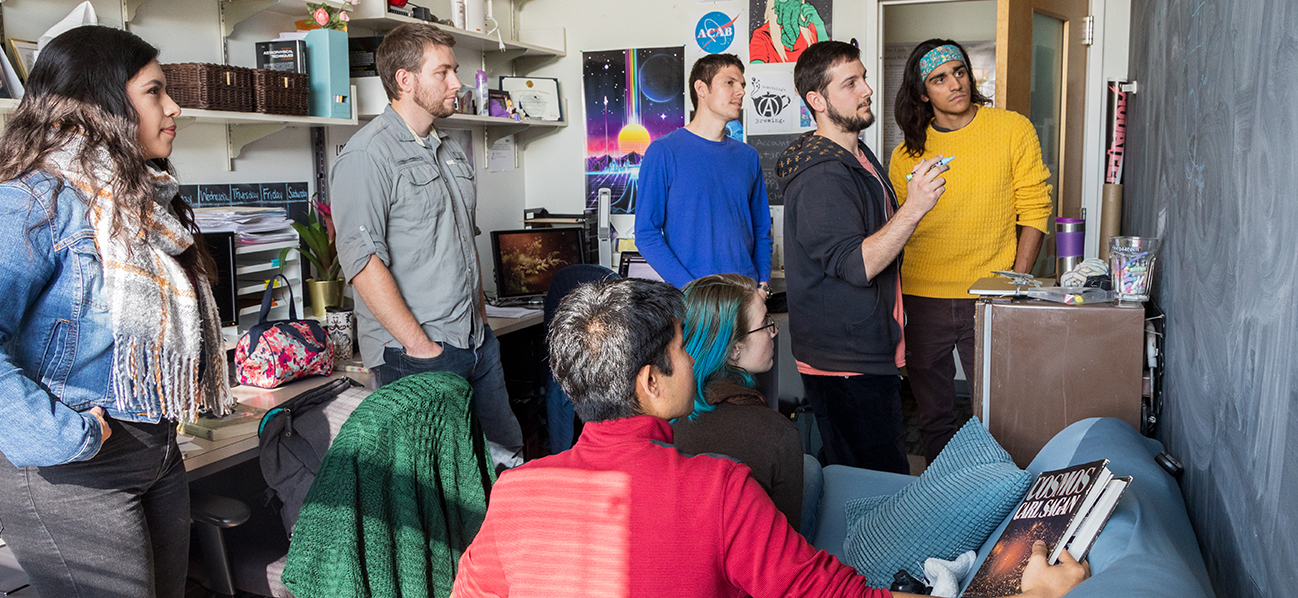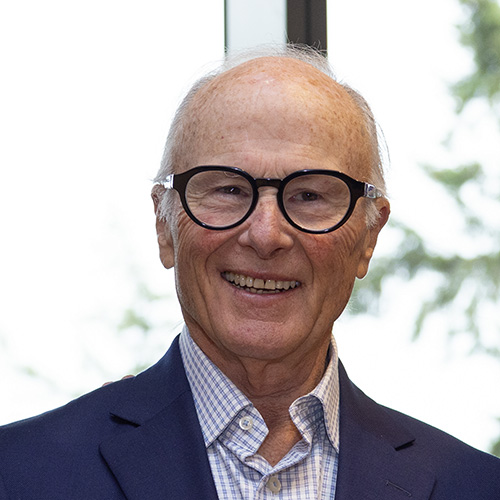
Are we alone in the Universe?
Victoria Meadows can’t answer that question. But as director of UW Astrobiology and principal investigator for the NASA Astrobiology Institute’s Virtual Planetary Laboratory (VPL), she and her colleagues are helping us inch ever closer to an answer.
“As astrobiologists, we’re trying to understand whether there is life beyond Earth, what it might be, where it might want to live, and what its distribution is throughout the Universe,” says Meadows, professor of astronomy. The research brings together scientists in astronomy, biology, earth and space sciences, atmospheric sciences, and other fields. For her leadership in astrobiology, Meadows recently received the Frank Drake Award from the SETI Institute.

Meadows explains that scientists cannot yet directly observe planets like Earth to determine their habitability. No current telescope is powerful enough for such observations. Instead scientists use computer modeling to test how altering various factors — the type of star around which a planet orbits, for example, or its interaction with neighboring planets — might impact its habitability. The goal is to identify planets that are able to support liquid water on their surface.
“That’s the gold standard for whether a planet is habitable,” says Meadows. “Life on other planets could be in a form we couldn’t possibly imagine, but if it is, we won’t know what we’re looking at and won’t be able to interpret it or identify it. So we start with life as we know it, using our solar system as an analog for exoplanetary systems.”
...we start with life as we know it, using our solar system as an analog for exoplanetary systems.
That means studying the diversity of life forms and environments on Earth, from amoeba-like protists deep in the ocean to microbes found on mountaintops. Some astrobiologists study environments of the early Earth, where organisms thrived in environments quite different than modern Earth. All of that information, along with our understanding of our own solar system, provides the basis for VPL’s computer models. VPL scientists then tweak the scenario — replacing our sun with a different type of star, for example — to see how the atmosphere is affected. About 75 scientists at 22 institutions are involved in these research efforts through VPL, a UW-based consortium.
While most of the research is virtual, one research team conducts physical experiments using an “artificial planet” — a sealed chamber with organisms growing inside. By altering the water, light, and gases pumped into the chamber, they can test how organisms might respond to different atmospheres and types of stars.

Of course telescopes play a critical role in astrobiology research as well, as the light captured from distant stars can provide information about their orbiting planets. Using the Kepler Space Telescope, scientists have identified nearly 2700 exoplanets — planets orbiting stars other than our sun — and 400 of these are small enough to be rocky worlds that could support water on their surfaces. As VPL research has shown, it's unlikely that every terrestrial planet can support an ocean, as many characteristics need to be factored into habitability. But it’s a start.
A massive telescope scheduled to launch into space in 2021 will be a game-changer. The James Webb Space Telescope (JWST), NASA’s successor to the Hubble Space Telescope, will for the first time enable observation of terrestrial planets with sufficient sensitivity to see gases in their atmospheres, which means that VPL scientists will be able to test the theories they have developed over nearly two decades of computer modeling.
“We’re right on the very tipping edge of this field now,” says Meadows. “So far, all of our work has been theoretical. We have never actually observed an atmosphere or ocean on a terrestrial exoplanet. Technology has not been capable of doing this. But that will come in the next five years with JWST and big telescopes on the ground. VPL has been providing the theoretical scientific foundations for the observations we are going to see.”

Meadows anticipates that JWST will “collapse a whole bunch of possibilities” that VPL’s computer models have predicted. Through direct observation, some predictions will be proven wrong and others may be confirmed, which will lead to more targeted virtual planetary work.
As JWST prepares to launch, an even more powerful telescope is in the early planning stages that may eventually replace JWST. Meadows has a hand in that telescope planning, serving on the committee studying instrument and telescope options. In fact, VPL is so instrumental in identifying the needs of future space technology that NASA recently awarded it a grant totaling $11 million over the next five years.
“At VPL we use simulators with different capabilities to figure out what instrument would work best to make the sort of observations we want to make,” says Meadows. “We share this information with NASA, because NASA wants to know how it can use its assets to best search for life in the Universe.”
It is likely to be decades before JWST’s successor telescope is launched. But for astronomers whose time scales tend toward billions of years, that’s nothing. “Biologists think we’re insane,” Meadows laughs. “How can we possibly plan instruments and experiments that take 27 years to build? But we do. Space telescopes are very challenging technologically and massively expensive, and we have to plan.”
VPL researchers must also continue their modeling, which will serve as the foundation for future observation work. With every question JWST may answer, there will undoubtedly be more questions raised.
“We have opened up some possibilities that people would not have considered if we hadn’t done the modeling,” says Meadows. “Once we get the data, we may find that the models are incorrect. If that happens, we’ll be able to say, ‘Oh, that’s not what's going on. Why is that?’ And answering that question pushes our science forward.”
More Stories

A Healing Heart Returns
In February, the UW Symphony will perform a symphony that Coast Salish elder Vi Hilbert commissioned years ago to heal the world after the heartbreak of 9/11. The symphony was first performed by the Seattle Symphony in 2006.

The Public Impact of Private Cities
Geography major Edwin Bai has researched private cities, developed by individuals and corporations, that "take the libertarian idea of low government regulation to the maximum."

A Transformative Gift for Arts & Sciences
To honor his wife and support the college that has meant so much to both of them, former Arts & Sciences dean John Simpson created the Katherine and John Simpson Endowed Deanship.